The Construction of Character, Book Two in the Wait, Wait, Don’t Query (Yet!) Series … by me!
Cover Reveal + Book & Author Info + Excerpt!
I’m so excited to be launching the second book in my series of short guides on writing!
The Construction of Character
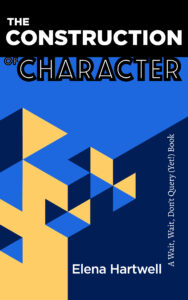 All genres, including fiction, memoir, and other narrative nonfiction, engage with individuals who drive the plot. The Construction of Character analyzes what makes a strong, complex character and how to strengthen works in progress or start something new.
All genres, including fiction, memoir, and other narrative nonfiction, engage with individuals who drive the plot. The Construction of Character analyzes what makes a strong, complex character and how to strengthen works in progress or start something new.
It also describes how to create engaging dialogue and avoid common missteps in making a fictional character feel real or a real person’s story feel flat.
Drawing on the author’s decades of storytelling and teaching experience, this short guide provides the framework for writers of fiction, narrative nonfiction, and memoir to construct the most dynamic characters possible. Readers don’t remember every plot point, but they do remember how characters make them feel.
This guide will help any writer reach their publishing goals.
Available August 22 in eBook, paperback & hardback
To pre-order the eBook of The Construction of Character, click any of the following links: Amazon & Barnes and Noble
Praise for The Construction of Character
I’m grateful to the wonderful writers who took the time to read my new guide. Be sure to click on their names and see what they are writing!
“An essential guide to the business of building real, compelling characters on the page. A treasure trove of principles, ideas and exercises for every writer of fiction. Highly recommended.”
—Jonathan Payne, author of Citizen Orlov, an Apple Books Book of the Month
“A clear, well-organized guide, equally helpful to the new writer aspiring to publication or the veteran wanting to strengthen a work-in-progress. An excellent addition to the ‘Wait! Wait! Don’t Query (Yet)!’ series. A joy to read.”
—Edward J. Leahy, author of Enemies of All and the Kim Brady Mysteries.
“Elena Hartwell’s The Construction of Character is a must-read for fiction writers, coming from an experienced novelist and editor. It breaks down the essential components of well-developed characters, and it demystifies complex concepts such as unlikeable protagonist, relatability, and super-objectives. The exploratory exercises provided at the end of each topic help writers achieve the goal of this masterful guide: creating characters that will stay with the reader long after the details of the plot fade. Focused and insightful, The Construction of Character belongs on every writer’s craft shelf.”
—Roxana Arama, author of Extreme Vetting: A Thriller
Excerpt from The Construction of Character
Introduction
Readers connect to characters. Characters Build Story.
Characters take us on an emotional ride—through how we relate to them, how they relate to each other, and the psychological journey they experience throughout the course of a story. We experience what the characters experience, regardless of genre or form. Memorable characters are key to writing memorable stories—even if a story is true. Memoir and narrative nonfiction are about people who function just as characters do in fiction.
As much as readers care about plots, no one remembers every plot point or event. Readers do, however, remember emotional responses to characters. We remember the characters we want to spend more time with; we wait impatiently for the next book in a series, or we hope a stand-alone book will generate a sequel.
While we won’t remember every event in a book, we will remember how the characters made us feel.
This guide is an opportunity to analyze what makes characters tick and discover why readers connect to characters—even those they wouldn’t want to know in the real world.
Whether a writer works on plot first, fleshing out characters later, or starts with complex characters, finding and refining the plot during rewrites, character and plot will be in Developing Characters A character’s objectives, backstory, and dialogue play integral roles in building the dynamic characters that readers crave.
From action/adventure to romance and from science fiction to crime fiction, readers relate to active characters driven by strong desires and concrete goals. Readers of memoir engage with an author’s actions and beliefs just as much as readers of fiction engage with those of invented characters. The actions and beliefs in both genres need motivation, obstacles, and stakes.
Narrative nonfiction explores the goals and drives of real people, whether an individual, like an extreme athlete, or a group, like survivors of a natural disaster. Characters—even when they exist in the real world—propel the plot of a story through actions, thoughts, and dialogue. Memoirists mine their own histories to create the most engaging version of themselves, with a specific set of goals to focus the material.
Character objectives drive action, which drives the plot, which drives the reader through the story, creating a book—fiction or nonfiction—that’s hard to put down. That’s why character objectives are so important.
Reading about a character without goals is like following someone around as they aimlessly go about their day. No matter how interesting a character (or a real person) might be, following them around for no reason won’t engage a reader for three hundred pages.
Characters can and should surprise readers, but that’s not the same as acting out of character. Complex characters have backstories and history, but that does not mean all that information needs to be on the page. And it definitely doesn’t need to appear all on page one.
Deftly handling exposition and backstory can make the difference between a manuscript destined to languish forever in a desk drawer and a polished, engaging manuscript that attracts agents, editors, and readers. Another important part of developing character is creating effective dialogue.
Strong dialogue balances a sense of authenticity while also eliminating unnecessary filler words. Good dialogue is both natural and polished. All of that and more will be discussed in The Construction of Character, but before we get too far, let’s start with the difference between plot-driven and character-driven manuscripts, terms that are often used in the literary world.
Want to learn more? eBook, paperback & hardback will be available soon!
Elena Hartwell (Also Writes as Elena Taylor)
It’s so fun to see my own bio in the spot where I host so many writers. I’d love to have you follow me on social media so we can continue to chat about writing!

Elena Hartwell spent several years working in theater as a playwright, director, designer, and educator before turning her storytelling skills to fiction. Her first series, the Eddie Shoes Mysteries, written under the name Elena Hartwell, introduced a quirky mother/daughter crime fighting duo.
With All We Buried, Elena returns to her dramatic roots and brings readers a much more serious and atmospheric novel. Located in her beloved Washington State, Elena uses her connection to the environment to produce a forbidding story of small town secrets and things that won’t stay buried.
Elena is also a senior editor with Allegory Editing, a developmental editing house, where she works one-on-one with writers to shape and polish manuscripts, short stories, and plays. If you’d like to work with Elena, visit www.allegoryediting.com.
Her favorite place to be is at Paradise, the property she and her hubby own south of Spokane, Washington. They live with their horses, Jasper, Radar, and Diggy, their dogs Polar and Wyatt, and their cats Coal Train and Cocoa. Elena holds a B.A. from the University of San Diego, a M.Ed. from the University of Washington, Tacoma, and a Ph.D. from the University of Georgia.
To learn more about me, click on my name, photo or any of the following links: Facebook, Instagram, and Twitter
Elena Taylor/Elena Hartwell
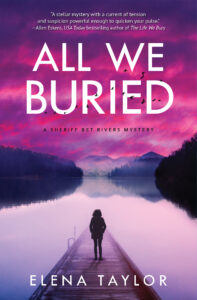
All We Buried, available now in print, e-book, and audio.
Silver Falchion Award Finalist, Best Investigator
Foreword INDIE Award Finalist, Best Mystery

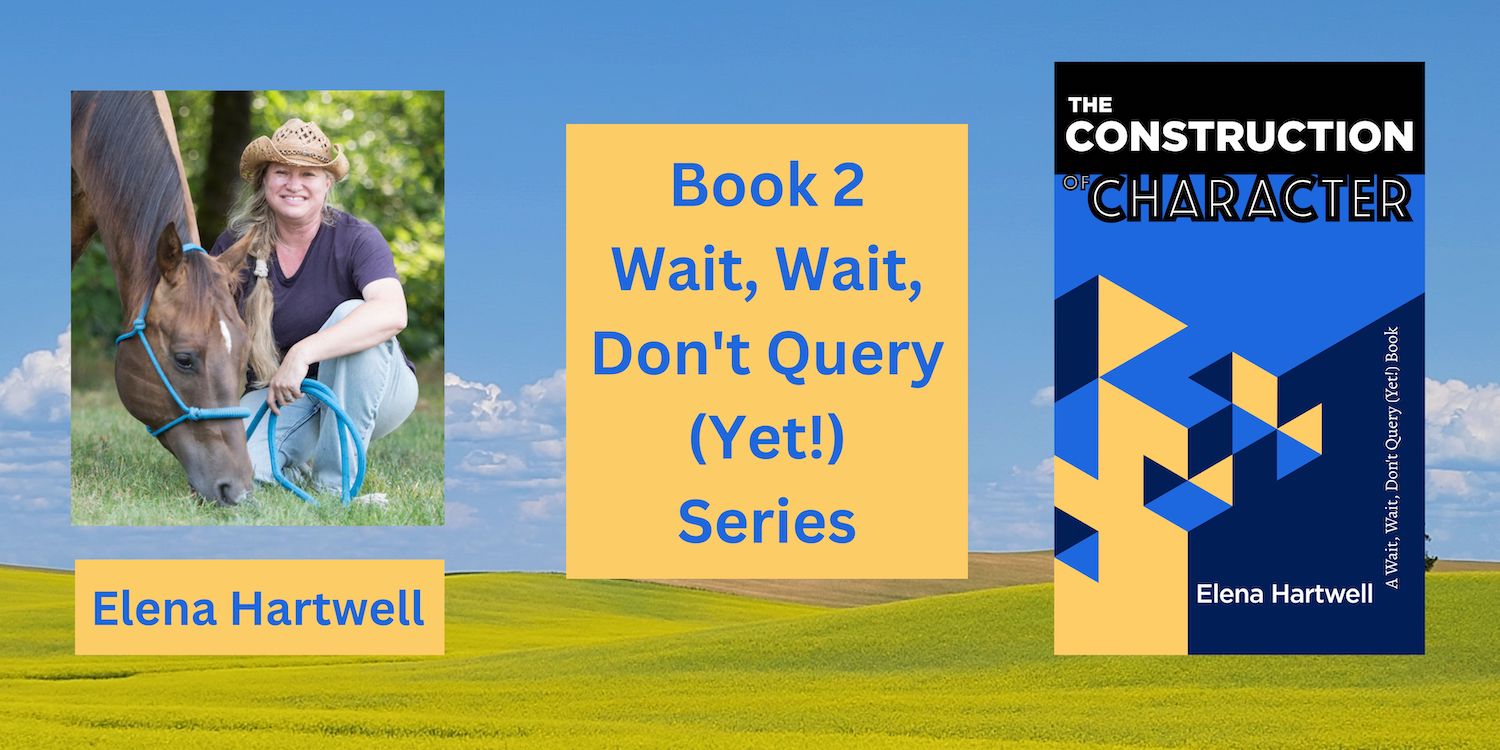
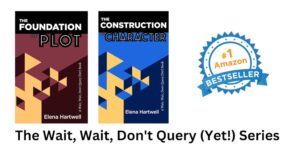
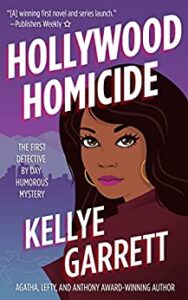
Pingback: Goodreads Book Giveaway: The Construction of Character - The Mystery of Writing